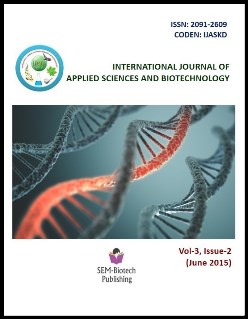Wide Spread Prevalence of β-Lactam Resistance among Bacterial Species Obtained from Non-Clinical Samples
DOI:
https://doi.org/10.3126/ijasbt.v3i2.12480Keywords:
beta-lactamase, Non clinical samples, drug resistanceAbstract
The potential threats of bacterial resistance, especially widespread multi-drug resistance, are of major concern. The scenario of a patient dying from an infection caused by a multi-drug resistant organism is now a reality. Infections caused by resistant strains of bacteria are related to higher morbidity and mortality. β-Lactam antibiotics are a broad class of antibiotics, consisting of penicillin, cephalosporin, Monobactam, and carbapenems. β-lactam antibiotics are used to treat various infections. β-lactamases are enzymes responsible to provide resistance to β-lactam antibiotics. Among Gram-negative bacteria, the emergence of resistance to expanded-spectrum cephalosporin has been a major concern. Initially a limited number of bacterial species that could mutate to hyper produce their chromosomal class C β-lactamase were found but now, resistance appeared in large number of bacterial species due to the production of TEM- or SHV-type ESBLs. In our study non clinical samples were selected to study the prevalence of drug resistance. After placing the various generations of β-lactam drugs we found that they were also resistant up to 4th generation of β-lactam drugs. This study confirms the growing incidences of β-lactam resistant strains in bacterial species of community origin.
Int J Appl Sci Biotechnol, Vol 3(2): 248-255
DOI: http://dx.doi.org/10.3126/ijasbt.v3i2.12480




